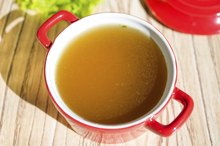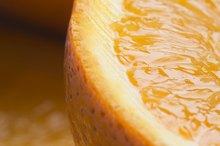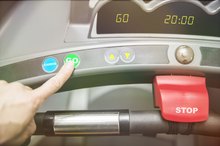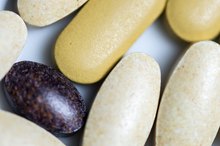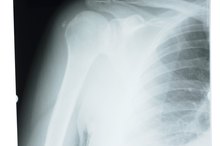What does fact checked mean?
At Healthfully, we strive to deliver objective content that is accurate and up-to-date. Our team periodically reviews articles in order to ensure content quality. The sources cited below consist of evidence from peer-reviewed journals, prominent medical organizations, academic associations, and government data.
The information contained on this site is for informational purposes only, and should not be used as a substitute for the advice of a professional health care provider. Please check with the appropriate physician regarding health questions and concerns. Although we strive to deliver accurate and up-to-date information, no guarantee to that effect is made.
Are There Good Foods for Hamstring Recovery?
You rely on your hamstrings -- the muscles on the back of your upper leg -- when you engage in activities that require sudden stops or starts. This includes soccer, basketball, soccer or tennis. If you pull a hamstring muscle or just overwork them during an exercise session, your recovery requires more than just ice and rest. You also must incorporate vital nutritional elements, such as protein and carbohydrates, for recovery. Always speak with your physician, however, before beginning a new diet program.
Carbohydrates
When you injure your hamstring through exercise, your body needs plenty of energy to recover and start the rebuilding process. Carbohydrates are your body’s chief energy source because your body breaks them down into glucose, a fast-acting energy form. Examples of high-carbohydrate foods for energy include corn, bread and rice. Consuming high-carbohydrate foods can provide for your recovery. In the future, you may want to eat them before you exercise so you will have plenty of energy to fuel your muscles and prevent injury.
- When you injure your hamstring through exercise, your body needs plenty of energy to recover and start the rebuilding process.
- In the future, you may want to eat them before you exercise so you will have plenty of energy to fuel your muscles and prevent injury.
Protein and Leucine
Diet After Total Abdominal Colectomy
Learn More
When you overload or injure your hamstring muscles, tiny tears are made in your muscle’s protein fibers that are like missing shingles from a roof. Just like you would repair a roof, you must consume protein to fill in these gaps and enhance your recovery period. Examples of good protein sources post-hamstring workout or injury include:
- grilled chicken
- turkey
- nuts
- legumes
- protein powders
- such as whey protein
Without enough protein in your diet, your body cannot repair injured muscles 2. Leucine is an amino acid, which is a building block of protein. While most protein sources will help to enhance muscle recovery, leucine is considered particularly beneficial when paired with carbohydrates, according to Dr. Gabe Mirkin.
- When you overload or injure your hamstring muscles, tiny tears are made in your muscle’s protein fibers that are like missing shingles from a roof.
Foods with B-Complex Vitamins
You should also load up on B-complex vitamins when you're recovering from a muscle injury. Your body relies on these nutrients to help you process protein -- absorbing and metabolizing amino acids so that they can be used to rebuild the damaged muscle tissue. Vitamin B-6 -- a nutrient found in meats, whole grains and leafy greens -- plays an especially important role in protein metabolism. Folate, which you can find in organ meats, leafy greens and lentils, also helps you process protein and plays an important role in new tissue growth.
- You should also load up on B-complex vitamins when you're recovering from a muscle injury.
- Vitamin B-6 -- a nutrient found in meats, whole grains and leafy greens -- plays an especially important role in protein metabolism.
Inflammation Fighters
Will a Torn Rotator Cuff Heal Without Surgery?
Learn More
The final piece of your hamstring muscle recovery puzzle is foods to fight inflammation. When you injure or overwork the hamstrings, the muscles and surrounding tissues can become irritated and inflamed -- swollen, painful, hot to the touch and red. With time and eating nutritional inflammation relievers, you can help to minimize these uncomfortable symptoms. This includes eating colorful fruits and vegetables, such as carrots, spinach, strawberries and blueberries. Incorporating these foods into your diet can help to minimize hamstring inflammation for optimal recovery. Omega-3 fatty acids, the health fats found in fish, walnuts and flaxseeds, also combat inflammation to promote recovery.
- The final piece of your hamstring muscle recovery puzzle is foods to fight inflammation.
- When you injure or overwork the hamstrings, the muscles and surrounding tissues can become irritated and inflamed -- swollen, painful, hot to the touch and red.
Related Articles
References
Writer Bio
Rachel Nall began writing in 2003. She is a former managing editor for custom health publications, including physician journals. She has written for The Associated Press and "Jezebel," "Charleston," "Chatter" and "Reach" magazines. Nall is currently pursuing her Bachelor of Science in Nursing at the University of Tennessee.
